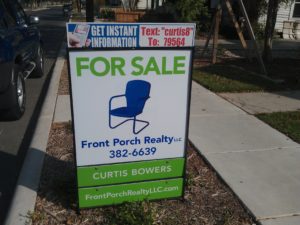This is a great article by David Matiella, an architect and resident of Mahncke Park. I really relate to the idea of “new homeowners come with an infusion of energy and optimism” and their blending with “sage older residents” of the neighborhood. This is certainly the case with my neighborhood Lavaca and many other great inner-loop neighborhoods experiencing revitalization. I have many neighbors like the one David writes of that “have seen this neighborhood grow, decline and come back.”
When I look around my neighborhood of Mahncke Park, I see many new neighbors moving in. This is always an exciting time, and it gets me wondering: Will these new people be nice? Will they be young or old? Will they have young children like us or — even better — do they have babysitter-age kids?
Historical information indicates the houses in my neighborhood were built between 1920 and 1950. Starting in 1891, George W. Brackenridge gave the city 25 acres of land connecting the water reservoir at the top of the hill near the San Antonio Botanical Garden to Brackenridge Park. He asked that the land be named for his close friend, City Park Commissioner Ludwig Mahncke, and the neighborhood that developed around the park still bears his name and statue.
Mahncke Park has character and a history. Some homes are in excellent shape, having been well- maintained by their owners, while others are in need of tender care.
For many reasons, older owners will sell their homes and move away, and new homeowners will move in. Most of the time, new homeowners come with an infusion of energy and optimism.
More and more, I observe houses being snatched up by buyers who restore or rehabilitate them. Some buyers purchase in order to turn a profit with these homes. Others buy in order to rehab a fixer-upper and create a liveable home for themselves. Their neighbors may lend a hand installing wood floors or painting, creating new relationships and further tightening the bond between neighbor and community.
There’s an older gentleman my family runs into on our neighborhood walks. Having witnessed the turnover of neighbors through the years, he is happy to gaze fondly at our small children and recite stories of his own childhood in the neighborhood.
“It sure is nice to have children playing on this street again,” he says with a twinkle in his eye. “I’ve been here 57 years and have seen this neighborhood grow, decline and come back.” I cannot mistake the nostalgic pride in his manner as he says this about his neighborhood, now my neighborhood — our neighborhood.
He is not just talking about the neighborhood houses, he is talking about the people who make up the neighborhood, and I realize that my mind-set about Mahncke Park has been broadened once again by one of our sage older residents.
The man’s words become a lesson when I look with pride at the fine older homes in Mahncke Park and realize that I can put too much emphasis on the materiality of our neighborhood. A collection of houses may make a neighborhood, but it is the people who live in these homes who are truly special and create a community.
David Matiella, Assoc. AIA, is a project manager at Marmon Mok Architecture.

![2ASEB [ePS] Curtis Bowers Southtown Food Truck Alamo Street Eat Bar](https://frontporchrealtyllc.com/wp-content/uploads/2012/04/2ASEB-ePS-300x225.jpg)
![3ASEB [ePS] Curtis Bowers Southtown Food Truck Alamo Street Eat Bar](https://frontporchrealtyllc.com/wp-content/uploads/2012/04/3ASEB-ePS-300x225.jpg)
![4ASEB [ePS] Curtis Bowers Southtown Food Truck Alamo Street Eat Bar](https://frontporchrealtyllc.com/wp-content/uploads/2012/04/4ASEB-ePS-300x225.jpg)
![5ASEB [ePS] Curtis Bowers Southtown Food Truck Alamo Street Eat Bar](https://frontporchrealtyllc.com/wp-content/uploads/2012/04/5ASEB-ePS-300x225.jpg)
![7ASEB [ePS] Curtis Bowers Southtown Food Truck Alamo Street Eat Bar](https://frontporchrealtyllc.com/wp-content/uploads/2012/04/7ASEB-ePS-300x225.jpg)
![8ASEB [ePS] Curtis Bowers Southtown Food Truck Alamo Street Eat Bar](https://frontporchrealtyllc.com/wp-content/uploads/2012/04/8ASEB-ePS-300x225.jpg)
![9ASEB [ePS] Curtis Bowers Southtown Food Truck Alamo Street Eat Bar](https://frontporchrealtyllc.com/wp-content/uploads/2012/04/9ASEB-ePS-300x225.jpg)


